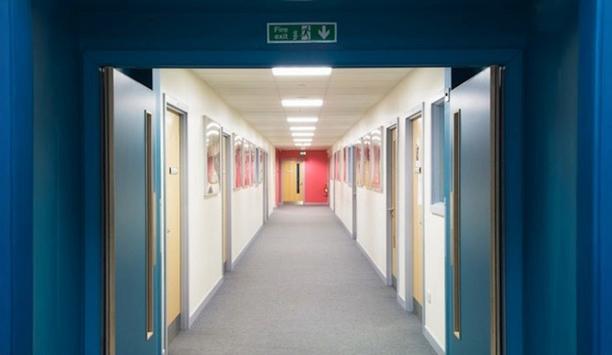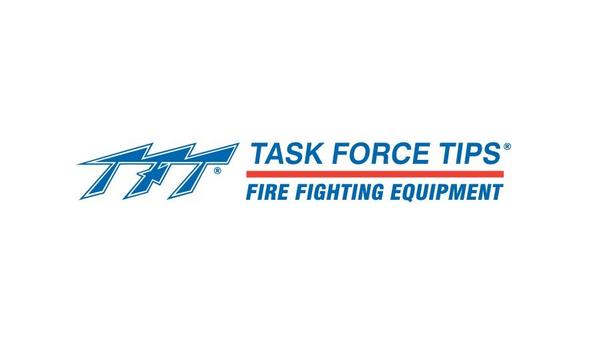BS 5839 provides recommendations for the planning, design, installation, commissioning, and maintenance of fire detectors and fire alarm systems in and around non-domestic and domestic premises.
- BS 5839 – 1 (Non-Domestic), new revision published 2017
- BS 5839 – 6 (Domestic), new revision published 2019
The standards are targeted toward anyone involved in the commissioning, installation, design, and planning of fire alarm and detection systems.
What is the difference between Category P and L?
In BS 5839-1, the fire detection and alarm systems are broken down into Property (P) and Life (L)
In BS 5839-1, the fire detection and alarm systems are broken down into two main categories Property (P) and Life (L). The category of any system should be defined by the fire strategy and should follow any risk assessment carried out.
There are two property categories, P1 and P2. The main purpose of the P Category is to protect either the property itself or its contents. This may negate the need for manual call points and/or alarm devices.
- P2 recommends automatic fire detection in defined areas only. This could simply just be a boiler room or one area where the content could have high value or specific risk.
- P1 recommends automatic fire detection throughout all areas. It can have additions if required due to risk, so users can have P1/M, meaning automatic fire detection and manual call points throughout.
Category L Systems have six different subdivisions with the main difference from a P System being the need for alarm devices throughout.
- M– an M System does not use automatic fire detection, instead of relying on human intervention. This would be used in buildings where people are not sleeping. If a fire occurred, it would be identified by someone quickly and everyone would be evacuated before the escape routes were compromised. This is the lowest permitted system for life protection.
- L5 - an L5 system should have fire detectors installed based on a specific fire safety objective. For example, a single detector in a high-risk area – a boiler room – where, if a fire occurred, it could threaten the safety of occupants. Manual Call Points do not need to be installed; however, sounders are recommended throughout the building. L5 should not be used as means of a variation to BS 5839.
- L4 - an L4 system should have fire detectors installed in the corridors and stairways on the escape route. Manual Call Points and sounders should be installed by an M System.
- L3- an L3 system should be as L4 with added fire detectors in all rooms or areas opening onto escape routes.
- L2 - an L2 system should be as L3 with added fire detectors in rooms of higher risk, whether they open onto escape routes or not.
- L1 - an L1 System should have fire detectors placed throughout the entire building. Exceptions include rooms of less than approximately one square meter, provided the room is a low fire risk, for example, a toilet lobby.
What is the difference between BS5839 Part 1 and 6?
BS5839-6 splits its categories into Property (P) and Life (L), but also adds a D for ‘Domestic’
BS5839-6 has some similarities with BS5839-1; however, the main difference is the use of manual call points and alarm devices, sound levels, and siting. For example, BS5839-1 requires visual alarms in all sanitary areas, however in BS5839-6 this is not the case, but they can be recommended in a risk assessment.
Like BS5839-1, BS5839-6 splits its categories into Property (P) and Life (L), but also adds a D for ‘Domestic’ to its coding. PD and LD, respectively.
PD Categories:
- PD2– automatic fire detectors installed only in defined areas.
- PD1– automatic fire detectors installed throughout all areas other than toilets, bathrooms, and shower rooms.
The LD categories are similar to BS 5839-1, but they only have three subdivisions, and no L5 or M type.
- LD3 – recommends automatic fire detection in all areas that form part of the escape route, such as corridors and stairways.
- LD2 –recommends, in addition to LD3, automatic fire detection in all areas defined to have a high fire risk. These should be documented.
- LD1 –recommends automatic fire detection throughout the premises.
Automatic fire detection grades
Devices can be standalone or interlinked, either via a wired or wireless link
In addition to design categories, BS5839-6 also has grades for automatic fire detection. These grades recommend the minimum quality or functionality of a detector to be used.
In the previous versions of BS5839-6, there were six levels of grades ranging from A-F. This has been reduced to four with the removal of grades B and E, however grades D & F have had additions made to them. Devices can be standalone or interlinked, either via a wired or wireless link.
- Grade D1 – a system of one or more mains-powered detectors, each with a tamperproof standby supply consisting of a battery or batteries.
- Grade D2 –a system of one or more mains-powered detectors, each with an integral standby supply consisting of a user-replaceable battery or batteries.
- Grade F1 –a system of one or more battery-powered detectors powered by a tamperproof primary battery or batteries.
- Grade F2 –a system of one or more battery-powered detectors powered by a user-replaceable primary battery or batteries.
- Grade A –fire detection and fire alarm system, which incorporates Control and Indicating Equipment (CIE) conforming to BS EN 542 and power supply equipment conforming to BS EN 544, and which is designed and installed by all the recommendations of BS 58391:2017.
- Grade C –a system of fire detectors and alarm sounders (which may be combined in the form of smoke alarms) connected to a common power supply, comprising of the normal mains and a standby supply, with central control equipment.
Grades D2 and F2 recommend detectors be powered by a replaceable battery cell, whilst grades D1 and F1 use a non-replaceable cell which is typically rechargeable.















